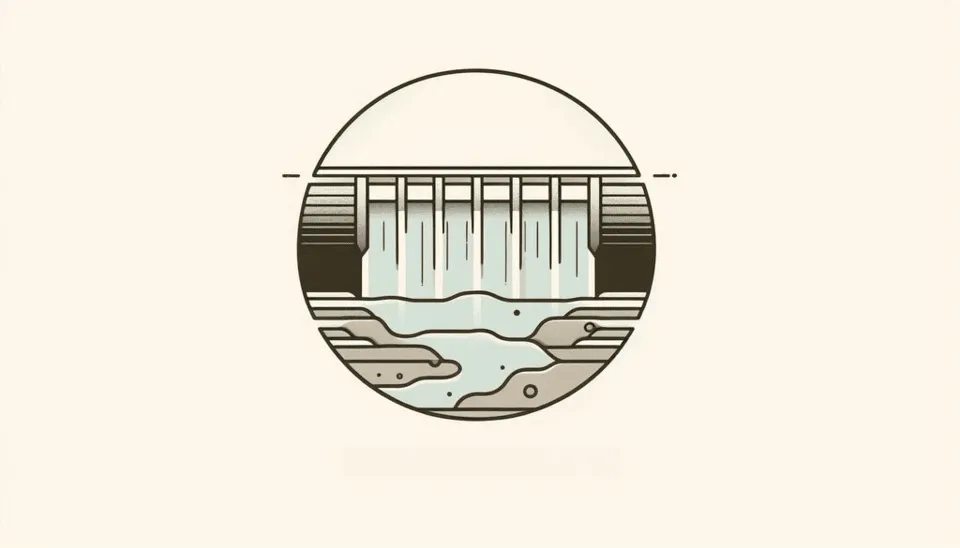
Did you know that there are more than 58,000 dams with a total storage capacity of 7 to 8.3 thousand cubic kilometers in the whole world? Of course, if we also count smaller impoundments with an area of more than 100 square meters, we reach a significant number of 16 million. Dam construction dates back thousands of years, but most of the large dams with walls over 15 meters were built 60 years ago. Dams and their reservoirs are important due to seasonal water supply and renewable energy production, and their number is increasing day by day. Almost half of the world's dams have been built to supply irrigation water, and about 14% of the world's food production is owed to dams. More dams and reservoirs are expected to be built with a 70% increase in human food needs by 2050 (Mulligan et al., 2020; Lehner et al., 2011). These are only a few examples of the importance of reservoirs and dams in the world that guarantee human life now and in the future.
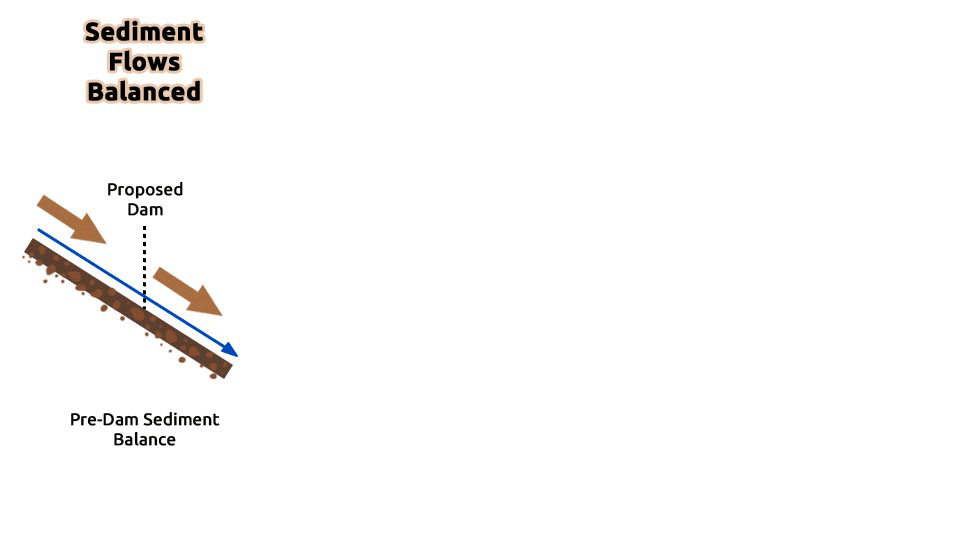
Despite the importance of dams and their role in human life, dam construction also brings many challenges and negative effects. For example, dam construction reduces water fungal biomass and, on the other hand, increases soil microorganisms in downstream lake wetlands. Also, by blocking the way of fish migration, changing the thermal properties of water, and fragmenting habitats, it affects the lives of fish and aquatic species (Wu et al., 2019). Another challenge is sediment trapping in dams and reservoirs. In this article, we are going to discuss the importance of reservoir sediment trapping and dam sediment trapping, unveiling their negative (or even positive) effects and susceptible solutions.
1. What is Sediment Trapping in Dams and Reservoirs?
As the river approaches dams and reservoirs, the speed of flow decreases. By reducing the flow speed, the turbulence of the river flow is also reduced and lost. As a result, the river's ability to move sediments and sand decreases. Finer sediments come out of suspension and start to settle. This process is called sediment trapping, and dams and reservoirs are prone to it due to the inflow from the upstream river and the retention of sediment. Sediment trapping in dams and reservoirs is important since it has physical, chemical, and ecosystem effects, which are discussed in Section 2 (Winton et al., 2019).
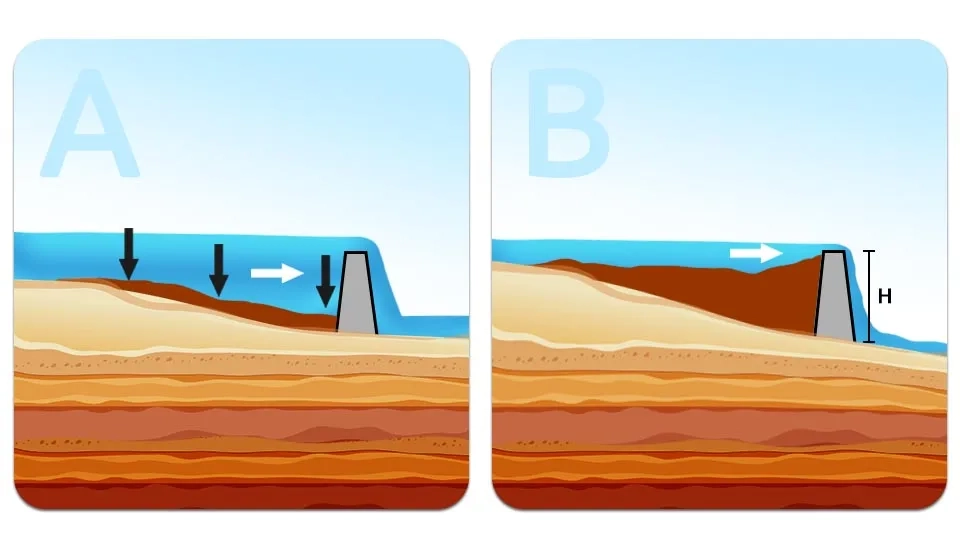
Large reservoirs with a storage capacity of more than 0.5 cubic kilometers are prone to trapping half of the inflow with an efficiency of 80% or more. The construction of large dams and reservoirs in large basins such as the Colorado and the Nile has caused complete sediment trapping. Sediment trapping in dams and reservoirs is not limited to some geographical areas but is observed all over the world. However, North America, Africa, and Australia are also heavily affected by large reservoirs and dams, making them susceptible to sediment trapping. It is estimated that 4-5 gigatons of sediment are left annually in 45,000 registered reservoirs worldwide. The massive volume of sediment trapping and its effects emphasize comprehensive studies (water, sediment, carbon, and nutrients) during the construction of dams and reservoirs (Vörösmarty et al., 2003).
2. Effects of Sediment Trapping in Dams and Reservoirs
Sediment trapping in dams and reservoirs will bring many consequences and challenges. The effects of sediment trapping in dams and reservoirs affect the quality and quantity of reservoirs, dams, deltas, plains, and downstream rivers. In the following, the effects of sediment trapping in dams and reservoirs are discussed in detail.
2.1. Impacts on Downstream Ecosystems
Rivers contain and carry sediments and nutrients to maintain the quality and life of aquatic ecosystems and nearby habitats. By trapping nutrients and sediments, dams and reservoirs affect downstream and distant ecosystems such as deltas and flood plains. In addition, sediment trapping in dams and reservoirs increases erosion downstream of dams and reservoirs from the outflow, and the habitat of fish and invertebrates in the canal is also destroyed. Dams and reservoirs change the outflow and lower the chance of flooding on the banks of downstream rivers by lowering seasonal hydrological peaks. This stops nutrients from getting to flood plains and deltas, which has a negative effect on the ecosystem of flood plains and downstream deltas (Kondolf et al., 1997). It is estimated that dams and reservoirs can accumulate up to 96% of the sediment in the upstream river and prevent the sediment from reaching the plains and deltas downstream. Plains and deltas need years to form, and with the reduction of downstream sediment and the increase of erosion caused by the rise of sea levels, many of the world's medium and large deltas have disappeared and remain above water (Giosan et al., 2014; Kondolf et al., 2014).
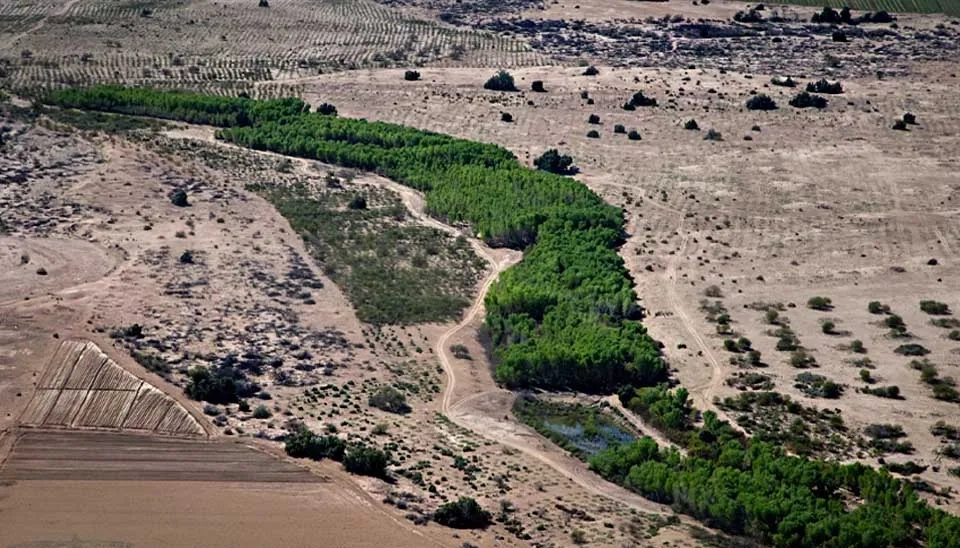
2.2. Dam and Reservoir Storage Capacity
The continuation of dam sediment trapping and reservoir sediment trapping causes sediment to be replaced by water in dams and reservoirs. The increase in population on the one hand and sediment trapping on the other hand leads to a decrease in per capita storage (the amount of storage in dams and reservoirs per person). For example, per capita reservoir storage in the United States was 45,000 cubic meters per person in 1975, but by 2019, it had fallen to 27,000 cubic meters per person, a 40 percent decrease (Randle et al., 2019).
The results of sediment flux data show that the contemporary storage capacity of the reservoirs compared to the installed capacity has decreased by 6.5, 3.2, 4.3, 2.5, 7.5, and 3.4% in the continents of Asia, North America, Oceania, South America, Europe, and Africa, respectively. In general, on a global scale, the volume of reservoirs has decreased by 4.5%. Without preventive measures and good management, it is expected that many reservoirs and dams will lose their function in the coming years due to sediment trapping in dams and reservoirs. Also, the increase in population and the increase in the need for water in reservoirs and dams will cause challenges with reducing the capacity of reservoirs and dams (Wisset et al., 2013).
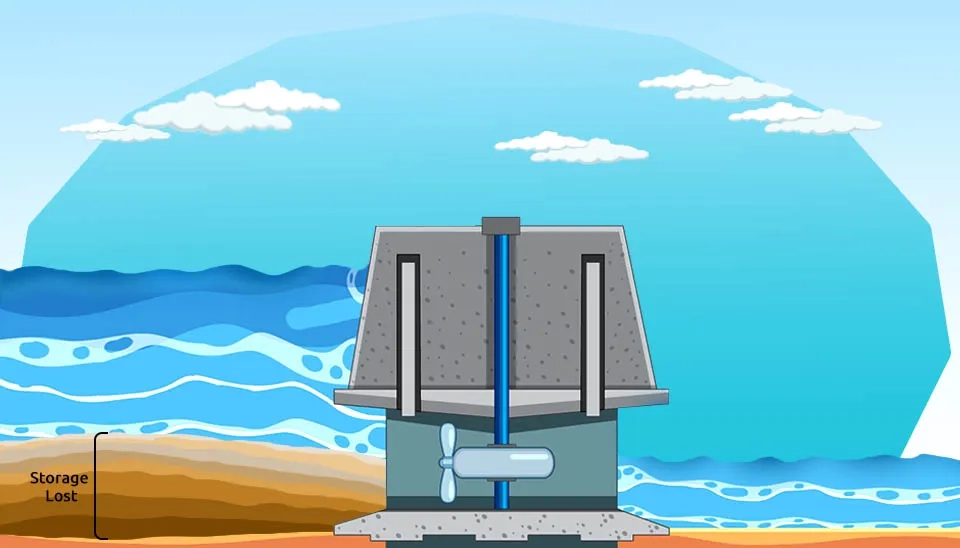
2.3. Marine Oligotrophication
The process of reducing or exhausting nutrients in aquatic ecosystems is called oligotrophication. In recent decades, the transport of suspended sediments has been greatly reduced by human factors such as the construction of dams and reservoirs. The reduction of sediment transport in some rivers, such as the Nile, is such that all sediments are trapped by dams and reservoirs. A 15–40% decrease in the accumulation rate of fine sediments and an 8-fold increase in the accumulation rate of coarse sediments will have many consequences. An increase in calcium carbonate, a decrease in total organic carbon, and a change in the benthic foraminiferal assemblage are among the effects of sediment trapping in dams and reservoirs, which lead to a decrease in nutrient fluxes and the occurrence of oligotrophication. Benthic oligotrophication processes in downstream rivers have had significant consequences in ecosystems around the world, such as the Eastern Mediterranean ecosystem. The consequences of oligotrophication affect the ecological function of rivers, flood plains, deltas, and coastal waters. (Herut et al., 2023).
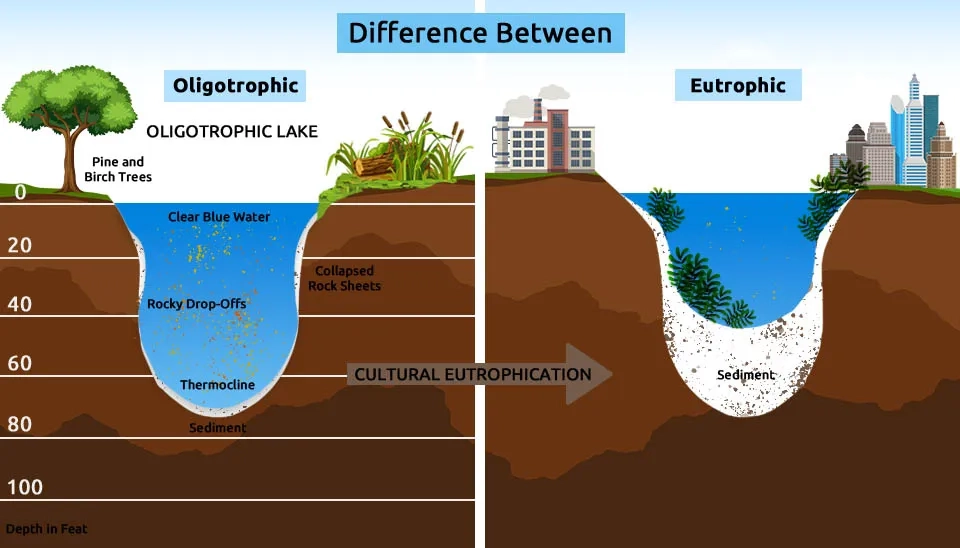
2.4. Elemental Ratios and Phytoplankton Communities
Along with phosphorus and nitrogen as important nutrients in aquatic ecosystems, other elements also play a key role in biodiversity and aquatic animal species. Silicon (Si) is one of the essential nutrients for animal ecosystems, especially certain types of phytoplankton. Eutrophication and dam sediment trapping (or reservoir sediment trapping) reduce the concentration of silicon in downstream rivers by trapping silicon in reservoirs. The decrease in silicon concentration has reduced the ratio of silicon to nitrogen, which favors non-silicon species over diatoms and transforms phytoplankton communities. Marine diatoms need dissolved silicate to grow and create an external shell. The required limitation of the ratio of silicate to dissolved inorganic nitrogen for marine diatoms is equal to one. By reducing the ratio of silicate to dissolved inorganic nitrogen to below one, diatoms and the food web are endangered and it has significant consequences for coastal and estuarine fish communities and the emergence of algal blooms (Turner et al., 1998).
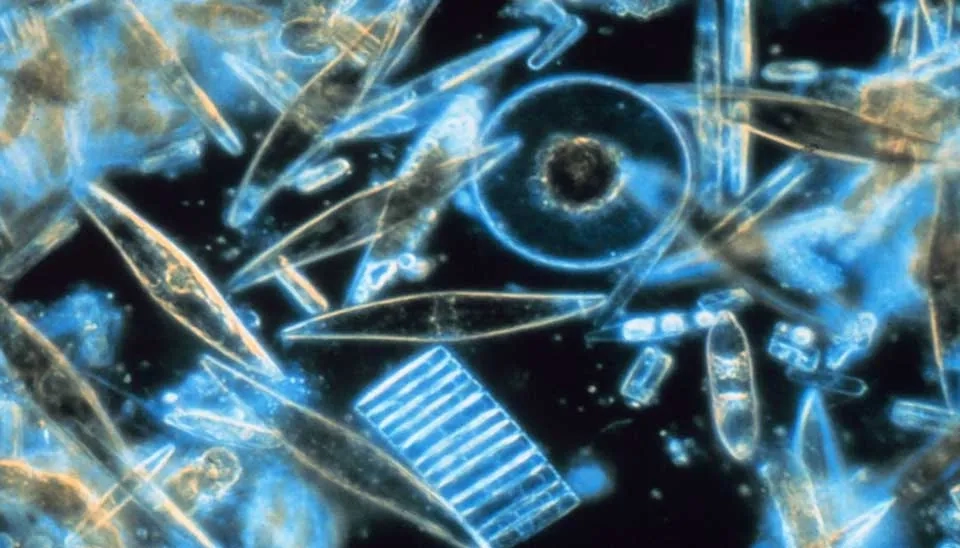
2.5. Reduction of Hydropower Efficiency
One of the ways to supply the energy needed by industries and urban life is renewable energy. The challenges of non-renewable energy such as fossil fuels have caused mankind to go towards renewable energy. It is expected that more than half of new energy investments will be spent on renewable energy in the next 20 years. It is also expected that a quarter of renewable energy will be provided through hydropower. The countries of China, Africa, Southeast Asia, Latin America, and Europe have a high potential for using renewable hydropower energy. However, sediment trapping in dams and reservoirs is one of the main challenges related to hydropower performance. Sediment trapping in dams and reservoirs with the emergence of technical, economic, and environmental obstacles, has hindered the growth and prosperity of the hydropower market in the present and future. Dam sediment trapping reduces the water capacity and volume of the reservoir, reducing the hydropower potential. On the other hand, sediments accumulated in dams and reservoirs not only cause the erosion of turbines and mechanical equipment but also require continuous monitoring and maintenance to maintain the performance and efficiency of hydropower, which has economic consequences (Hauer et al., 2018; Dewals et al., 2012). Maintaining hydropower performance requires providing solutions to deal with sediment trapping in dams and reservoirs.
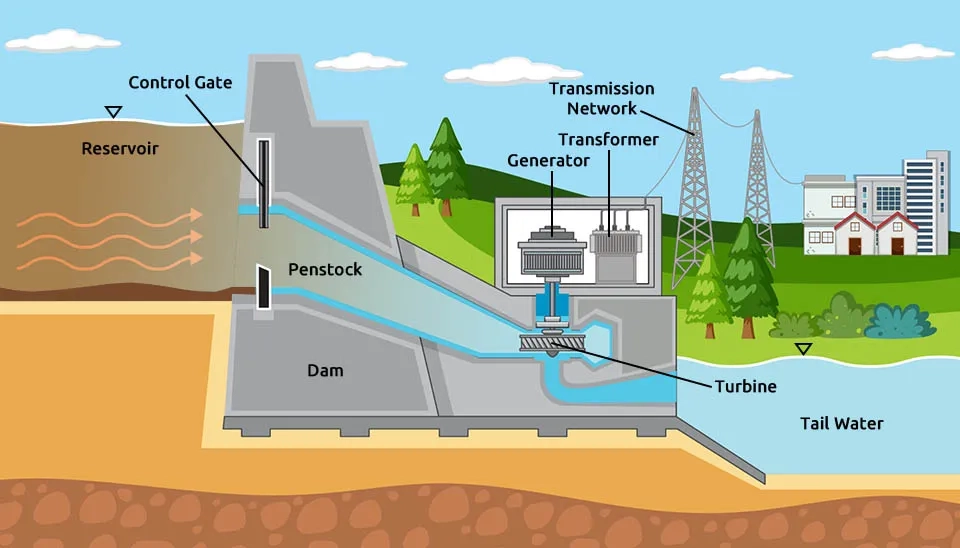
3. Conclusion
Dams and reservoirs are considered valuable water resources by supplying agricultural water, producing renewable energy and hydroelectric power, adjusting the fluctuations of river flow and preventing floods. Therefore, in recent decades, many dams and reservoirs have been built around the world; their number has exceeded 58,000 and their capacity has exceeded 7,000 cubic meters. However, dams and reservoirs have also left challenges and negative effects, such as environmental effects. One of the consequences of dams and reservoirs is the process of sediment trapping. As the river approaches the dam, the velocity and turbulence of the flow decrease, and the suspended particles of the river begin to settle, which results in sediment trapping in dams and reservoirs. The effects of sediment trapping in dams and reservoirs make this phenomenon more significant, which has environmental and economic aspects. With the accumulation of sediments in dams and reservoirs and the failure to transfer sediments downstream, the downstream ecosystem and biodiversity are affected. Deltas and downstream floodplains are dramatically prone to deformation and destruction. With almost complete confinement of sediments and nutrients in dams and reservoirs, nutrient fluxes downstream are reduced and the phenomenon of oligotrophication occurs. Also, reducing the concentration of some nutrients, such as silicon, endangers the life of diatoms and affects the phytoplankton community. In addition to the environmental effects of sediment trapping, the water capacity of dams and reservoirs is reduced and the efficiency and performance of hydroelectric power are decreased, which has economic consequences. The wide range of effects of sediment trapping in dams and reservoirs shows the importance of providing solutions to deal with sediment accumulation or its removal in dams and reservoirs in order to maintain the health of dams, reservoirs, and water supplies.
